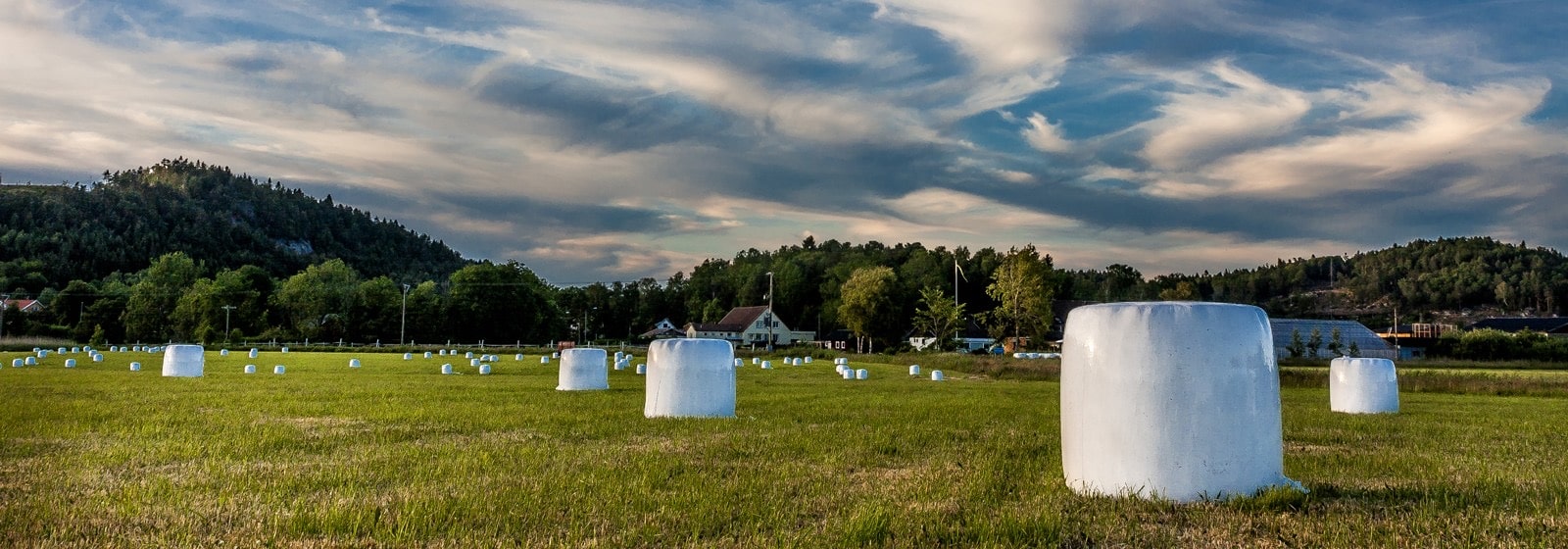Silage plastic comes in different forms that suit different practices and crops. High-quality plastic can help keep your crops in their best condition regardless of what you plan to use it for. Here are a few options to consider. Here are some of the advantages of using good plastic. They will help protect your crops from the harmful effects of oxidation.
When making silage, you can choose between round or square bales. The bales are usually wrapped with silage plastic to exclude air. The plastic may cover the entire bale or only the curved sides of a cylindrical bale.
Silostop’s O2 Barrier 2in1 Combi Film

The Silostop(r) Ultimate Oxygen Barrier Film offers a unique oxygen barrier. It is thin, strong, and easy to apply. It also significantly reduces dry matter loss in silage and improves aerobic stability during feed out. These properties have been independently tested and published.
The Silostop(r) O2 Barrier 2in1 Combi Film combines the advantages of a silage sheet with a vacuum film. It offers up to 10 times less oxygen permeability while maintaining as much strength as conventional sheeting. This combination of performance and flexibility makes it ideal for standard silage applications.
Silostop’s O2 Barrier
Silostop’s O2 Barrier for Silage Plastic reduces the risk of visible surface spoilage in bunker silos. It’s a lightweight, durable polymer film that eliminates air pockets and uses less plastic than conventional black sheets. The film also clings to the top of the silage clamp, similarly to a conventional “cling film” sheet, eliminating the need for an additional black plastic layer.
Silostop’s oxygen barrier film is one of the most effective and efficient silage plastic coverings. Its innovative technology has been independently tested and proven to reduce the rate of dry matter loss and retain the crop’s nutritional value. Moreover, it is easier to handle than traditional plastic.
Silostop films prevent surface spoilage by more than 50% and increase the aerobic stability of the silage for up to two days. They are also thinner than conventional black/white PE plastic, reducing waste and saving money. As a result, the film can be reused multiple times and is more environmentally friendly.
Silostop’s O2 Barrier for Silage Plastic has the highest oxygen barrier rating of all the silage plastics on the market. The company’s oxygen barrier has a low oxygen transfer rate of 23.2 per cent. It is available in several sizes and costs.
Silostop’s Sillage Wrap
Silostop’s Sillage Wrap protects your silage from airborne contaminants and has 100 times the effectiveness of conventional PE plastic film. In addition, it has been proven to limit air and oxygen access to the silage, preventing aerobic spoilage that can reduce feed intake and milk production. The material is also UV-protected and can be used in various agricultural applications.
Silostop’s Sillage Wrap helps reduce the development of moulds on silage, which can reduce feed quality and cause digestive upsets. Its oxygen barrier technology reduces mould growth on the bale’s surface and outer layers, reducing dry matter losses by up to 40%. It is multi-layered to prevent tears and is flexible enough to be applied to various bale wrappers.
Types of Silage Plastic
Silage plastic is a popular material in agriculture, and several types are available. Choose a product that suits your needs and preferences and helps you preserve the condition of your crops. This type of plastic can be recycled again. It can be used to wrap feed, including silage. If you’re looking for a plastic to cover silage, you might want to consider a Polydress Silopro 120 silage tarp, which is made of Low-Density Polyethylene (LDPE) instead of PVC.
This plastic is five to seven mils thick, making it a good barrier against oxygen. In addition, it follows the contours of the surface, filling any gaps and providing a tight seal. This type of plastic also prevents surface spoilage and protects the material from ultraviolet light. Contact IFFPG to learn more about their recycling program if you’re interested in recycling silage plastic.
Forage spoilage is a major problem in the farming industry. Silage tarps and covers offer farmers an affordable solution to the problem. The polyethylene used in these products protects the forage from weather and UV damage. Sillage covers come in standard and heavy-duty string-reinforced versions, and some even have oxygen barriers.
When making silage, you can choose between round or square bales. The bales are usually wrapped with silage plastic to exclude air. The plastic may cover the entire bale or only the curved sides of a cylindrical bale.

Leave a Reply